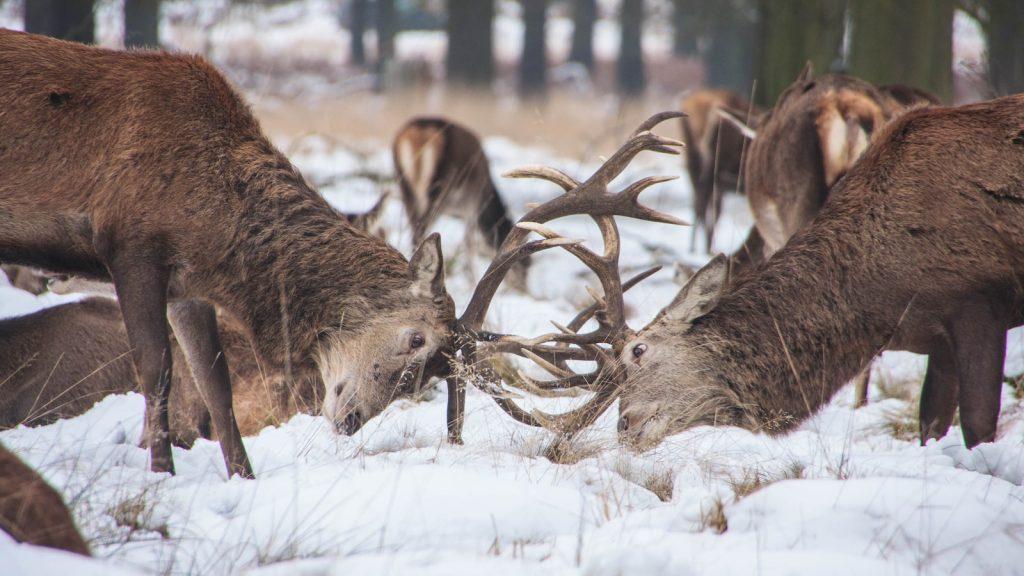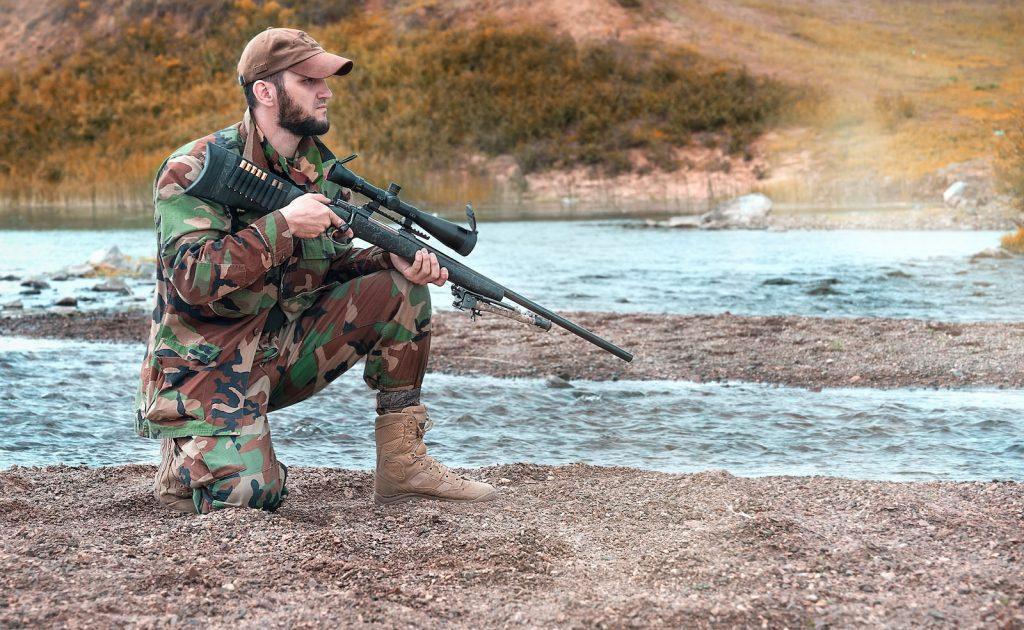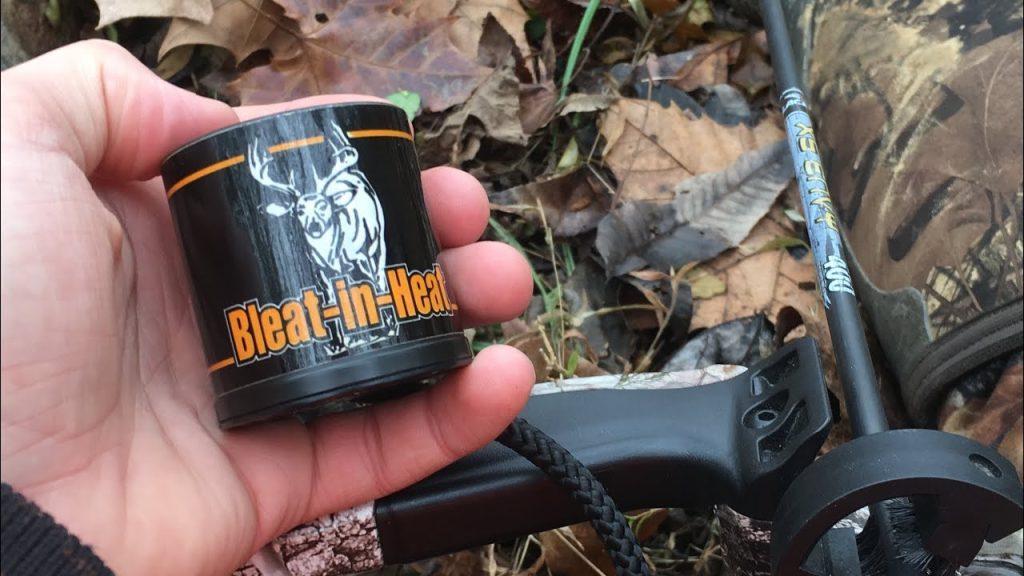It can be an exhilarating experience to have a wildlife encounter in your backyard, and this is especially true if you happen to come across a doe who is in heat. If you’ve ever heard the sound that a doe in heat call makes, you’re probably curious about what it is. Becoming more familiar with the wildlife that lives around us may be accomplished in a number of ways, one of which is by learning about doe in heat calls and how they function.
We’ll discuss what a doe in heat call is, how it operates, and why it’s crucial to have an understanding of it all in the following paragraphs.
Table of Contents
Exploring the Science Behind a Doe in Heat’s Call
A female deer, also known as a doe, will make a distinctive cry while she is in heat. This call, which is known as a “doe in heat” call, is used to attract possible mates. The scientific explanation for this phenomenon is intricate, and there is a great deal more to learn about it. In this section, we will discuss some of the research that has been conducted in an effort to solve the riddles surrounding this call and how it actually operates.
To begin, it is essential to keep in mind that the call given by a doe that is in heat is a kind of communication. According to studies, female deer use this sound to entice male deer to mate with them so that they can have offspring. According to the findings of other studies, the cries can also be used to warn of impending danger or to make other deer aware of the presence of prospective predators.
Pheromones are chemicals that are released by the body to attract males. When a female deer is in heat, her body releases these pheromones to attract males. It is believed that these pheromones are employed in conjunction with the call given by a doe that is in heat to make it more effective.
In addition, researchers have found that the sound made by a doe while she is in heat is composed of a variety of frequency levels. This makes it possible for the call to travel further than it would have on a single frequency. Additionally, it enables the female deer to employ her call in a variety of different contexts.
A low-pitched call, on the other hand, can be used to communicate danger or alert other deer to potential predators. For instance, a high-pitched call can be used to attract males from a larger distance, while a low-pitched sound can be used to attract males.
In conclusion, it is considered that the call made by a doe when she is in heat is an important component of the social organization of deer. This call assists female deer in establishing dominance over other female deer and assists in the formation of social hierarchies among the female deer.
In general, there is still a lot more to learn about the science that lies behind the call a doe makes when she is in heat, but the information that has already been unearthed is interesting. This intricate method of communication is used by female deer to woo possible suitors and warn her herd about potential threats.
How to Recognize a Doe in Heat Call in the Wild
When a doe is in heat, it will make a characteristic “contact” call out into the surrounding area. This call has been described as sounding like a quick, sharp barking noise, and it is often produced in the late afternoon. When a buck hears this sound, it is a signal for him to approach the doe in order to mate with her. During this part of the interaction, the doe will normally maintain a steady posture with her ears facing forward.
If you want to know how to identify a doe in heat call in the wild, all you have to do is listen for a succession of short, sharp barks, which usually occur in the late afternoon. In addition to this, you should seek for a doe that is motionless and has her ears directed forward. If you hear and see a doe in this state, you can be certain that she is in heat and ready to mate. If you see a doe in this state, you can be sure that she is in heat.
How are Bucks Attracted to Does in Heat?
During the breeding season, the fragrance that is left behind by a doe is an essential component in drawing in bucks. Does who are in heat will be able to recognize bucks that have marked their territory with their scent glands and urine since this behavior occurs during the rut. Bucks are generally attracted to the scent of a doe that is in heat, which is likely due to the potent attractant properties of doe urine and odors.
Visual signals, like as a doe’s body language and posture, can also pique the interest of a buck that is interested in mating with a doe that is in heat. Does may also create a loud, vocalizing sound known as a “tending grunt” or “thrash” to attract bucks during the rut. This sound may be heard during the early morning hours. All of these indicators allow mature bucks to distinguish a doe that is pregnant, which is one of the most important elements in attracting mature bucks.
Is there an Average Duration of a Doe in Heat Call?
When trying to get a grasp on how a doe behaves while in heat, one of the most critical things to ask is, “How long does a doe stay in heat?” It is vital to have an idea of the typical length of time a doe spends in heat in order to determine when mating should take place and when the doe has the best chance of becoming pregnant.
The length of time that a doe spends in heat can range anywhere from four to six days on average, with some does remaining in heat for as long as eight days. During this period, the doe may experience some changes in her physical appearance as well as her behavior, such as being more loud and attracting the attention of bucks that are in the neighborhood.
Because most does only go into heat once or twice a year, it is critical to have a solid understanding of the typical length of time a doe is in heat in order to achieve successful mating. It is essential to keep in mind, however, that the average lifespan may differ from one breed to another and from one individual doe to another. Breeders can improve their ability to forecast the doe’s likelihood of entering and exiting heat by keeping a close eye on the animal and paying attention to how she behaves.
Examining the Complexity of a Buck’s Response to a Doe in Heat’s Call

The complexity of a buck’s response to a doe in heat’s call can be fascinating to observe and analyze. While a buck may seem to be acting on instinct, there is much more going on. By examining the complexities of the buck’s response to a doe in heat’s call, hunters and wildlife enthusiasts can gain a better understanding of the behavior of these majestic animals.
When a doe in heat is calling, a buck’s response can vary greatly depending on his age, size, and antler growth. Younger bucks may respond quickly and aggressively, while more mature bucks may be more reserved and cautious. Additionally, the size of a buck’s antlers can influence how he responds to his potential mate. Bucks with larger antlers are more likely to be more assertive and confident in their approach, while smaller bucks may take a more passive approach.
The buck’s response to a doe in heat’s call can also be affected by his current environment. If a buck is in an area with a lot of competition or activity, he may be less likely to respond. Conversely, if the buck is in a quiet and secluded area, he may be more likely to respond aggressively and with confidence.
By examining the complexity of a buck’s response to a doe in heat’s call, we can gain insight into the behavior of these animals and how they interact with their environment. Understanding the complexities of a buck’s behavior can help hunters and wildlife enthusiasts better appreciate these magnificent creatures.
Appraising the Effectiveness of Does in Heat Calls
The use of does that are in the heat as a management tool for deer can be a successful strategy. Does in heat calls have the ability to coax mature male deer away from their beds and into a certain area. The hunters’ ability to zero in on certain bucks and boost their odds of making a successful kill are both facilitated by this method. In addition, employing does that are in heat as a method for monitoring the number of deer in an area is an excellent way to approach the problem.
Hunters are able to acquire a better comprehension of the dynamics of the local deer population if they keep a tally of the number of does and bucks that answer to their calls. In the end, determining how well does in heat calls work can help hunters improve their chances of success and better manage the deer populations in their respective areas.
How Do Hunters Utilize Doe in Heat Calls?

For decades, hunters have been utilizing the sounds of does in heat as a way to lure in male deer in the region. During the rut, which occurs in the fall and winter, when hormones in the bucks cause them to look for does who are pregnant or likely to become pregnant, this type of call is typically utilized. Calls that simulate the sound of a female deer in heat, known as “doe in heat” calls, are effective in luring bucks in from large distances.
It is possible for hunters to attract mature bucks that would otherwise be out of range or difficult to find by making use of doe in heat calls.
Can Human Activity Disturb a Doe in Heat’s Calls?
Yes, it is possible for human activities to disrupt the sounds of a doe that is in heat. It is expected that the doe will be more active than usual and vocalize more frequently during the peak of her estrous cycle, which occurs when she is pregnant. Unfortunately, her calls are easily disrupted by human activity, which can take the form of increased noise levels, increased car traffic, and other types of disturbances. This may inhibit her from talking with possible mates and make it more challenging for her to locate a companion who is well suited to her needs.
It is essential to maintain as much tranquility as possible in the vicinity of a doe that is in heat so as to cause the least amount of disruption possible. This will make it more likely that her calls will not be interrupted and that she will be able to find a partner who is suited for her.
Where Can You Buy a Doe in Heat Call?

You can find a doe in heat call for sale at a variety of outdoor sporting goods stores, as well as on the websites of several hunting and outdoor supply retailers. During the rut, when male deer are most active in their pursuit of females, hunters employ a call to entice female deer to approach them. A sound that imitates the sound a doe makes when she is in estrus will be produced by the doe in heat call, and this sound will attract the attention of bucks that are in the region.
The calls can be found in a variety of sizes and shapes, and some of them are able to produce more than one sound. These kind of calls can be utilized throughout the entirety of the deer hunting season; however, they are often most successful during the rut.
Quaker Boy Bleat-in-Heat Call
The Quaker Boy Bleat-in-Heat Call is the perfect tool to bring in that trophy buck during the rut. This call mimics the sound of a doe in heat, and is designed to draw bucks in from far away. Its easy-to-use design requires little practice, and it’s made of high-quality materials for long-lasting use. With the Quaker Boy Bleat-in-Heat Call, you can bring in that trophy buck like never before!
- Simple operation
- Mistake free
- Perfect doe bleat everytime
- Protective cap
- Sport type: hunt
Prices pulled from the Amazon Product Advertising API on:
Product prices and availability are accurate as of the date/time indicated and are subject to change. Any price and availability information displayed on [relevant Amazon Site(s), as applicable] at the time of purchase will apply to the purchase of this product.
Primos Hunting Deer Estrus Bleat Call
The Primos Hunting Deer Estrus Bleat Call is the perfect tool for hunters looking to attract deer. This call features realistic and reliable bleats that accurately mimic the sound of a doe in heat. It’s simple enough for any hunter to use, making it great for novice and experienced outdoorsmen alike. The call is designed with a durable construction, so it will last season after season. Pick up the Primos Hunting Deer Estrus Bleat Call and start attracting deer to your hunting grounds today!
- Estrus bleats tell bucks that a doe is ready to breed
- Raised thumb Hole locator for a insured seal and consistent sound
- Number 1 Deer call of all time
- Trust the Brand that others in the field use and dont settle for le
Prices pulled from the Amazon Product Advertising API on:
Product prices and availability are accurate as of the date/time indicated and are subject to change. Any price and availability information displayed on [relevant Amazon Site(s), as applicable] at the time of purchase will apply to the purchase of this product.
Hunters Specialties Adult Doe Estrus Bleat Deer Calls
The Hunters Specialties Adult Doe Estrus Bleat Deer Calls is the perfect tool to attract bucks during the rut while out in the field. Boasting a realistic and loud sound that accurately mimics a doe call, this call will bring the bucks in close. Unlike other deer calls, this call captures the sound of a doe during estrus, making it ideal for mating season. For the serious hunter, the Hunters Specialties Adult Doe Estrus Bleat Deer Calls is an essential addition to their gear.
- Louder for longer range calling.
- Very effective throughout the rut.
- Easy Operation
- Sport type: Hunt
Prices pulled from the Amazon Product Advertising API on:
Product prices and availability are accurate as of the date/time indicated and are subject to change. Any price and availability information displayed on [relevant Amazon Site(s), as applicable] at the time of purchase will apply to the purchase of this product.
Conclusion
To summarize, a doe in heat call is a sound that a female deer makes while she is in the “heat” phase of her reproductive cycle or when she is seeking a mate. The breeding season, which is typically in the fall, is the time of year when one is most likely to hear it. The high-pitched bawl or bleat that a doe in heat makes is a common way to describe the sound that she makes.
When out in the woods, it can be helpful for hunters to be able to identify this sound since it can lead them to the deer they are seeking for. It is essential to pay close attention when listening in order to correctly recognize a doe in heat call because each individual doe has a call that is unique to itself.



